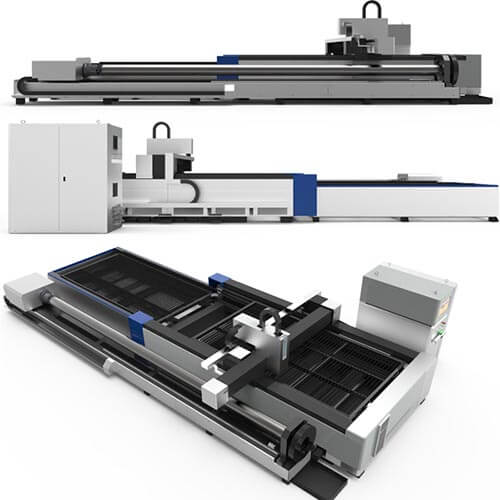Table of Contents
Application of laser welding in processing and production
Fiber laser welding is an advanced welding technology. Development process of laser welding technology is a development process of continuous innovation. With the development of new laser welding technology and equipment, laser welding is gradually replacing traditional welding technology.
Main application areas
The main application areas of laser welding are the manufacturing of automobiles, aerospace, and ships and so on. Taking automobile manufacturing as an example, laser welding has achieved large-scale, and related automatic production lines and welding robots have appeared.
Widespread use of laser welding
According to relevant statistics, in developed industrial countries in Europe and America, 50% to 70% of auto parts are processed by laser processing. Among them, laser welding and laser cutting are mainly used. Laser welding has become a standard process in the automotive industry. my country’s automobile industry has also begun to attach importance to this advanced welding technology. For example, Shanghai Volkswagen, which was the first to use laser welding technology, has used laser welding technology on the body of a newly launched multi-function car to reach 41 meters.
Specific applications in the automotive industry
In the automotive industry, laser technology is mainly used for body tailor welding, welding and parts welding.
· Welding of body panels
The laser used in the welding of car body panels can weld metal plates with different thicknesses and different surface coatings together, and then press them, so that the panel structure can achieve the most reasonable metal combination. Since there is little deformation, secondary processing is also omitted. Laser welding speeds up the process of replacing forged parts with body stamped parts.
The use of laser welding can reduce the overlap width and some strengthening parts, and can also compress the volume of the body structure itself. This alone can reduce the weight of the body by about 50kg. Moreover, laser welding technology can ensure that the solder joints are connected to the molecular level, which effectively improves the rigidity and collision safety of the car body, while effectively reducing the noise in the car.
· Welding in car body design and manufacture
Laser tailor welding is in the design and manufacture of the car body. According to the different design and performance requirements of the car body, different specifications of steel plates are selected, and the manufacture of a certain part of the car body is completed through laser cutting and assembly technology, such as the front windshield frame and the door inner panel, underbody, center pillar, etc.
Tailored laser welding has the advantages of reducing the number of parts and molds, reducing the number of spot welding, optimizing the amount of material, reducing the weight of parts, reducing costs, and improving dimensional accuracy.
· Welding of body frame structure
Laser welding is also applied to the frame structure of the car body, such as the welding of the top cover and the side car body. The traditional welding method of resistance spot welding has been gradually replaced by laser welding. With laser welding technology, the width of the joint surface between the workpiece connections can be reduced, which not only reduces the use of plates but also improves the rigidity of the car body. It has been used by some of the world’s major automobile manufacturers and leading parts suppliers that produce high-end cars. Adopted.
Other industry
Other industries such as aircraft manufacturing, jewellery, cell phone batteries, electronic components, sensors, watches, precision machinery, and communications have all introduced laser welding technology.
With the development of new laser welding technology and equipment, laser welding is gradually squeezing into the “territory” occupied by traditional welding technology for a long time.







